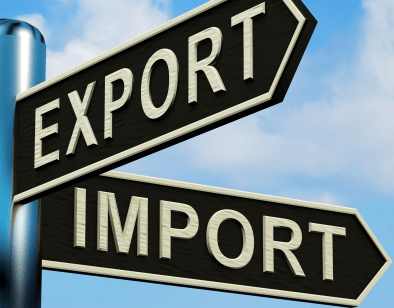
By Philip TAKYI(Dr)
The article showcases the key Trade-Based Money Laundering typologies which indicate the diverse methods used by perpetrators to exploit trade transactions for money laundering purposes.
Hopefully, stakeholders such as authorities and financial institutions would be vigilant in detecting and preventing these tactics to combat Trade-Based Money Laundering effectively.
Invoice Fraud
Invoice fraud occurs when someone purposely invoices for more than the correct amount, causing companies to overpay or even pay someone who never offered them goods or services in the first place. In today’s interconnected, fast-paced business landscape, countless operations have been simplified and sped up, thanks to the integration of digital tools and platforms.
While these advancements have ushered in an era of increased efficiency and globalization, they have concurrently opened pandora’s box of vulnerabilities, key among them being invoice fraud. The surge of this form of fraud stands as a stark reminder that with every digital leap, there comes an array of challenges that businesses must grapple with.
Invoice fraud, once a relatively unheard-of concept, has rapidly metamorphosed into a prevalent concern for both large corporations and small enterprises alike. A cursory look at recent statistics paints a daunting picture, the instances of invoice fraud have seen an unprecedented rise over the past decade. This isn’t just a number game; these statistics are emblematic of lost revenue, tainted reputations, and in some dire cases, the complete collapse of businesses.
The digitization of business operations, while a boon in many regards, has inadvertently created fertile ground for fraudsters to exploit. The convenience of electronic invoices, swift online transactions, and automated payment systems, while essential for modern businesses, have become the very tools that crafty cybercriminals manipulate to their advantage. They exploit the vast digital terrain, which is often inadequately guarded, to siphon off funds, disrupt operations, and sow seeds of distrust.
However, this is not merely a narrative of gloom. It’s a wake-up call. As we delve deeper into the intricacies of invoice fraud, its manifestations, and repercussions, it is crucial to approach the topic with a dual perspective: understanding the threat while simultaneously recognizing that the solutions, with the use of innovative technology, vigilance, and a proactive mindset.
Although no estimates from Suspicious Activity Filing Environment (SAFE), a system that allows financial institutions to report suspicious activities to FinCEN, were provided, over-reported exports are easily detectable through a comparison of bilateral trade statistics.
As earlier indicated, a comparison of China’s trade with Hong Kong shows that an alarming $101 billion of exports simply disappeared at the Hong Kong border in 2012 alone, with an additional $54 billion smuggled in during the first quarter of 2013. The cumulative amount of foreign exchange brought illicitly into China masked as trade payments from Hong Kong since the first quarter of 2006 adds up to an astounding $400 billion.
Shipment Fraud
In recent decades, maritime fraud has developed into a sector that is both highly profitable and relatively minimal risk. In the late 1970s, maritime criminal activity reached an all-time high, and the upward trend has only continued since that time.
The obvious implication of this is that it begs the question of what kinds of schemes could be at work during a maritime con. It is general knowledge that a single international commercial transaction involves many distinct types of enterprises, including vendors, purchasers, shippers, charterers, captains, crew, port authorities, inland hooligans, banks, and insurance companies.
The crime of maritime fraud is perpetrated when one of these individuals takes advantage of another to steal money or products. As a direct result of this, the term “marine fraud” refers to a particular type of fraud that takes place in the maritime industry. Documentary fraud, which occurs when a document or signature is faked, as well as chartering frauds, as well as the intentional or false loss or destruction of cargo, barratry, the scuttling of ships, and other similar schemes, are all examples of this (Jennings et al., 2006).
Over or under-shipment is an instance where a seller either ships more goods than previously agreed with the importer, thereby transferring greater value to the importer, or the exporter ships fewer goods than agreed, transferring greater value to the exporter. Over-shipping or short shipping works through a difference in the invoiced quantity of goods and the quantity of goods that are shipped.
Shell and Front Companies
A shell company is a business entity that has no real operations or assets. It is often used for money laundering by hiding the source and destination of illicit funds.
Front companies on the other hand are entities that serve as a front or cover for illicit activities, often used to facilitate money laundering, fraud, or other illicit financial transactions. They are designed to create a semblance of legitimacy while hiding the true purpose and ownership behind them. Front companies are considered to be fully functioning companies with the characteristics of a legitimate business, serving to disguise and obscure illicit financial activity. Businesses that deal with high volumes of cash are typically used as a front for criminal activities and money laundering.
A single instance of shell companies facilitating money laundering occurred in 2014 when Hewlett-Packard A.O. (HP Russia) agreed to pay more than $100 million in fines for violations of the Foreign Corrupt Practices Act (FCPA)18 (Athanas 2010; Deming 2006).
The plea agreement details how executives within HP Russia created a multimillion-dollar slush fund they used to bribe Russian government officials (U.S. Department of the Justice (DOJ) 2014). HP Russia laundered the payments through an intricate web of shell companies and bank accounts. This example reveals how such abuses are compounded because many jurisdictions permit shell entities to own and manage other shell entities (FinCEN 2006).
Recently, the U.S. Justice Department accused 33 persons of using a web of more than 250 shell entities to launder over $2.5 billion through the international banking system to help North Korea fund its weapons program and bypass international sanctions (Benner 2020). These multiple layers of cloaked ownership make it extremely difficult for forensic accountants and law enforcement officials to identify the beneficial owners.
Round-Tripping
Round-tripping is a methodology often associated with trade-based money laundering (TBML) involving the movement of funds out of a country, often through international trade transactions, and then brought back into the same country, creating the illusion of legitimate economic activity. This process involves a cyclical flow of funds, with the primary objective of disguising the illicit origin of money.
Since 2000, 35.18 billion USD have been routed through Mauritius making Mauritius the main contributor of FDI to India. Today, India is the No.1 recipient of funds through its diaspora. Most of these bilateral investments are routed through Mauritius.
Despite the Euro-zone crisis, Mauritius has an economic growth of nearly 4% which is a clear representation of the growth potential the country has.16 It helps to increase domestic markets competition, create job opportunities, and enhance business and economic growth.
Conclusion
This study on TBML, has reaffirmed the conclusion of earlier studies that TBML is an important channel for criminal organizations and terrorist financiers to move money or value to disguise its illicit origin and to integrate it into the formal economy.
The rapid growth in the global economy has made international trade an increasingly attractive avenue to move funds through goods and services. There are instances brought out in this Study where the veil of international trade was deliberately created to launder the proceeds of crime.
TBML is a sophisticated and evolving method used by individuals and entities to disguise the illicit origins of funds through international trade transactions. TBML involves intricate schemes that take advantage of the complexity of global trade, including the use of multiple transactions, mispricing, and the creation of fictitious trade documentation. Money launderers continuously innovate to stay ahead of detection efforts.
Stakeholders involved in international trade must prioritize due diligence to identify and mitigate the risks associated with TBML. This includes robust Know Your Customer (KYC) procedures, monitoring trade transactions for suspicious activities, and staying informed about evolving TBML techniques.
The use of advanced technology, combined with ongoing training for financial professionals, customs officials, and law enforcement personnel, is crucial in building a proactive and effective defense against TBML.
References
APG, Typologies http://www.apgml.org/frameworks/
APG, Overlapping Memberships of Multilateral Institutions, September 2007
http://www.apgml.org/jurisdictions/http://www.apgml.org/jurisdictions/docs/
36/
APG, Asia Pacific Group on Money Laundering Secretariat.
Arce, B. (2009). Taken to the cleaners: Panama’s financial secrecy laws facilitate
the laundering of evaded U.S. taxes.
Article: Another nail in the coffin of Thai democracy, by John Ungphakorn,
Bangkok Post, 10 October 2007.
ASEAN, 2001 ASEAN Declaration on Joint Action to Counter Terrorism, Bandar
Seri Begawan, 5 November 2001.
ASEAN, Work Program to Implement the ASEAN Plan of Action to Combat
Transnational Crime. Kuala Lumpur, 17 March 2002.
ASEAN, Transnational Crime and Terrorism http://www.aseansec.org/4964.htm.
ASEM AML Project Consultants, ASEM AML Project Consultants’ Technical
Assistance Needs Analysis Report on Thailand, February 2003, 3 December
2003 distributed by UNODC.
Dr. Takyi, is a seasoned Financial Security Expert and SBS Swiss Business School -Switzerland graduate, with over 20 years of experience in safeguarding financial assets, corporate governance, and risk management.
The post Trade-based financial crimes typologies appeared first on The Business & Financial Times.
Read Full Story















Facebook
Twitter
Pinterest
Instagram
Google+
YouTube
LinkedIn
RSS